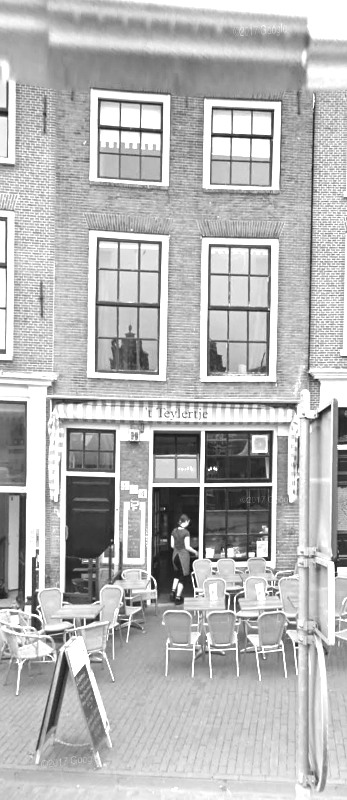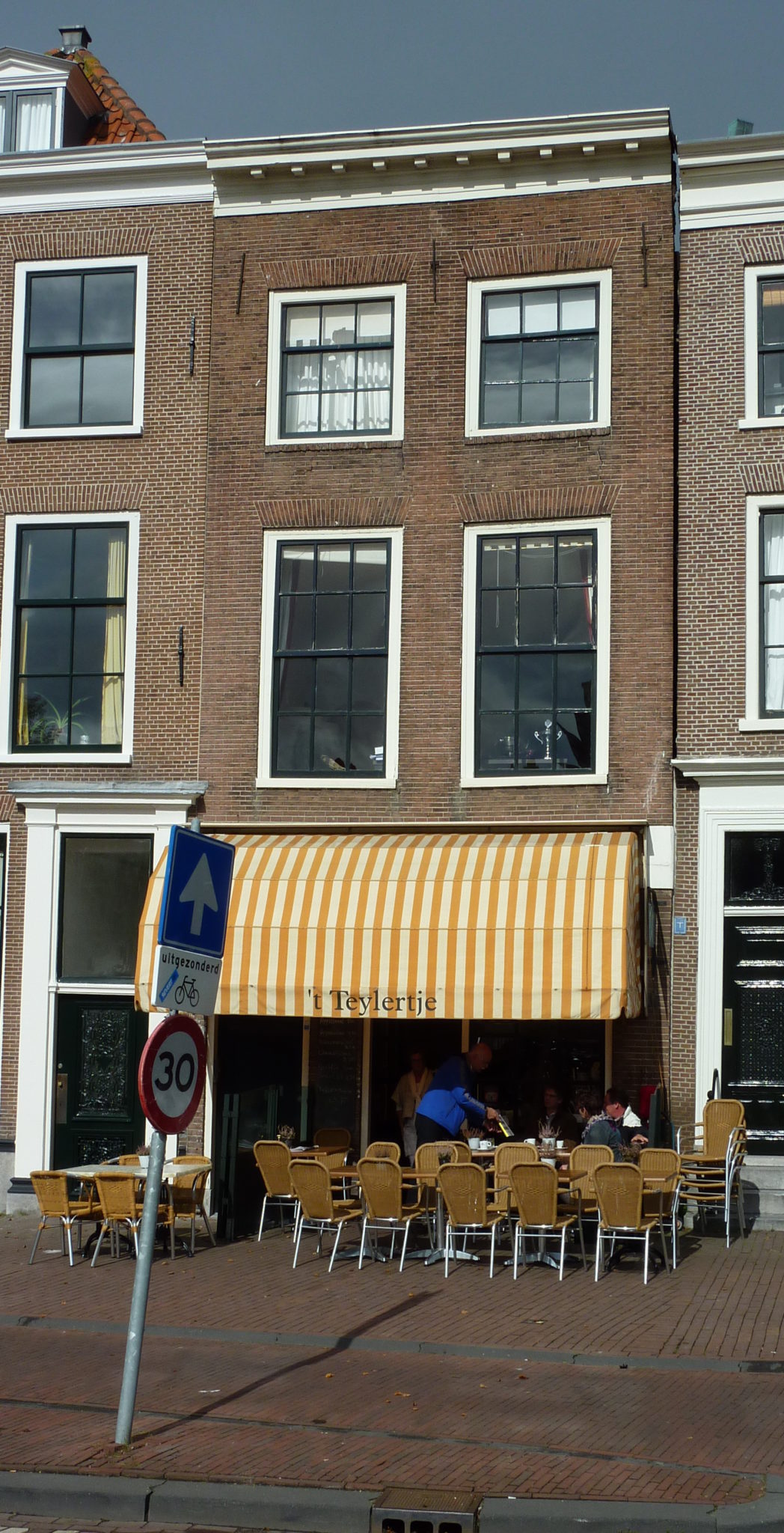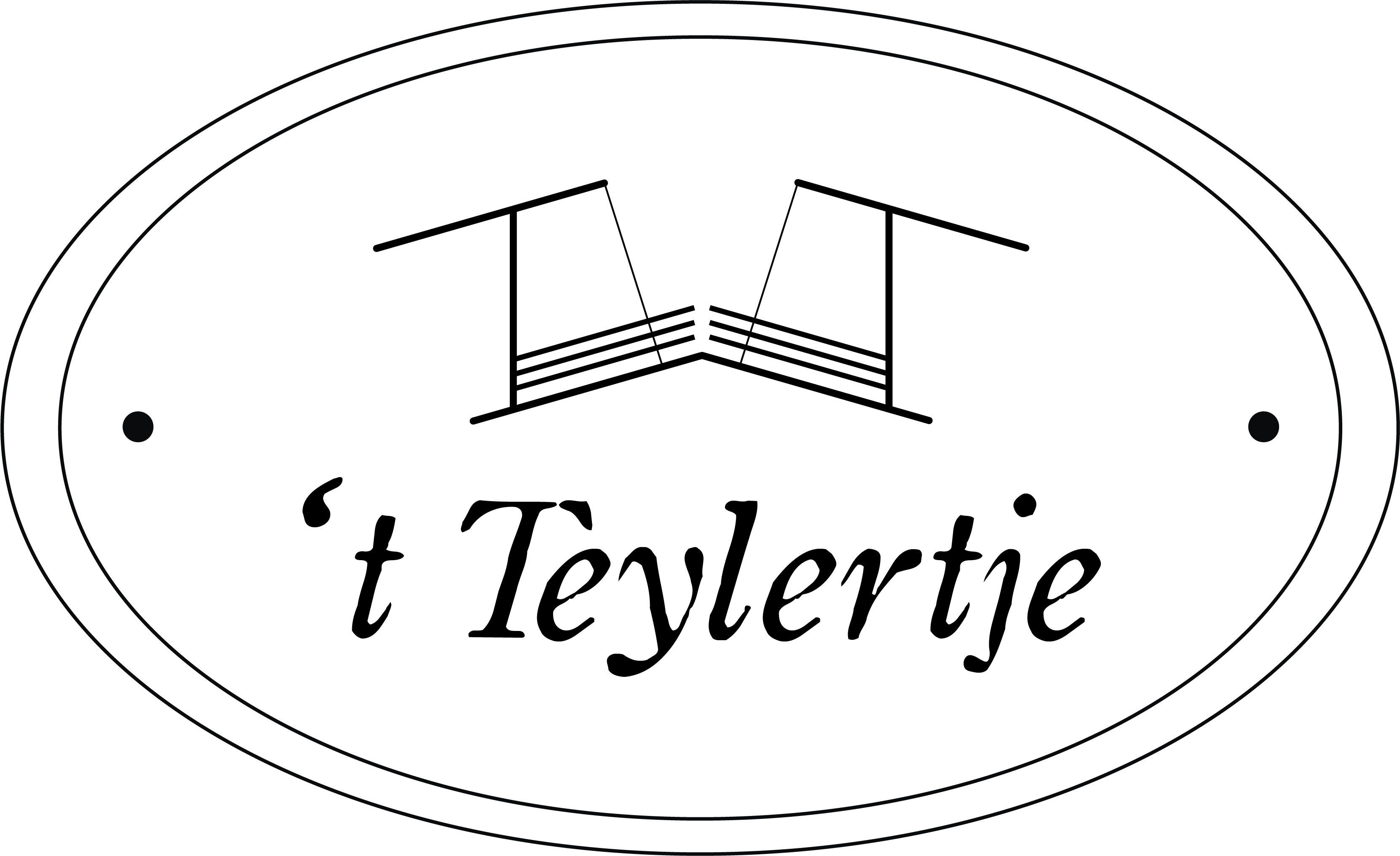
English translation
De naam Haarlem (Haarlo-heim of hooggelegen dorp) komt voor het eerst voor op een lijstje van eigendommen van de Utrechtse St-Maartenskerk in de jaren 918 tot 938. Al in de 11de eeuw was Haarlem zetel van de graaf van Holland. Hij had eerst een burcht aan het Spaarne bij de Gravestenenbrug. Schippers betaalden er tol.
De burcht stond aan de Grote Markt. Haarlem was de marktplaats voor Kennemerland. In 1245 kreeg Haarlem als tweede stad in Holland stadsrechten. In 1429 volgde het tolrecht. De strategische ligging aan de samenkomst van het Spaarne (binnenscheepvaart van Amsterdam naar het zuiden) en de oude landweg door Holland bracht de stad aanzienlijke economische welvaart. Er kwamen vele scheepswerven, bierbrouwerijen, weverijen en blekerijen en er werd op grote schaal gebouwd.
´t Teylertje aan de Grote Markt
Het pand met lijstgevel Spaarne nr. 4 dateert uit de 18e eeuw en is een Rijksmonument. De Gravestenenbrug waar wij op uit kijken is zelfs al meer dan 700 jaar oud. De Graaf van Holland bouwde hier zijn tolburcht om tolgelden te kunnen ontvangen van het scheepsverkeer. De lakenindustie, bierbrouwerijen en de scheepsbouw waren zeer florerend in die tijd.
Het Teylers Museum, gevestigd op Spaarne nr. 16 is het oudste museum van Nederland. Geopend in 1784 en gesticht vanuit de nalatenschap van Pieter Teyler Verhulst. Dit unieke historische deel van Haarlem kent sedert jaren op nr. 4 een koffie- en lunchroom onder de naam ’t Teylertje. Kortstondig heeft het MARGAUX geheten echter, sedert 1 oktober 2017 is de oude naam weer in ere herstelt. Ineke Pieters, eigenaar van ’t Teylertje van 1991 t/m 2016, is dan ook zeer verheugd
dat wij deze keuze hebben gemaakt.
The name Haarlem (Haarlo-Heim or high-rise village) appears for the first time on a list of properties of the Utrechtse St. Maarten church in the years 918 to 938. In the 11th century Haarlem was the seat of the Count of Holland. He first had a castle at the Spaarne at the Gravestenenbrug. Schippers paid a toll.
The castle was on the Grote Markt. Haarlem was the marketplace for Kennemerland. In 1245 Haarlem received city rights as the second city in Holland. In 1429 the toll was followed. The strategic location at the Spaarne meeting (inland shipping from Amsterdam to the south) and the old country road through Holland gave the city considerable economic prosperity. There were many shipyards, beer breweries, weaving houses and bleaches, and it was built on a large scale.
´t Teylertje at the Big Marked
The building with list facade Spaarne no. 4 dates back to the 18th century and is a National Monument. Our window view is at the Gravestenenbrug. This bridge is even over 700 years old. The Count of Holland built his toll castle here to receive the toll from ship traffic. The textile indusutry, beer breweries and ship- building were prospering at that time.
The Teylers Museum, located Spaarne no. 16 is the oldest museum of the Netherlands. Opened in 1784 en founded from the legacy of Pieter Teyler Verhulst. For years, this has been known as ’t Teylertje, Spaarne no. 4. A coffee- and lunchroom at this unique historical part of Haarlem. Briefly it was named Margaux, but as of October 1 2017 it retains its former name. Ineke Pieters, owner of ’t Teylertje 1991 until 2016, is very happy that we have made this choice.

